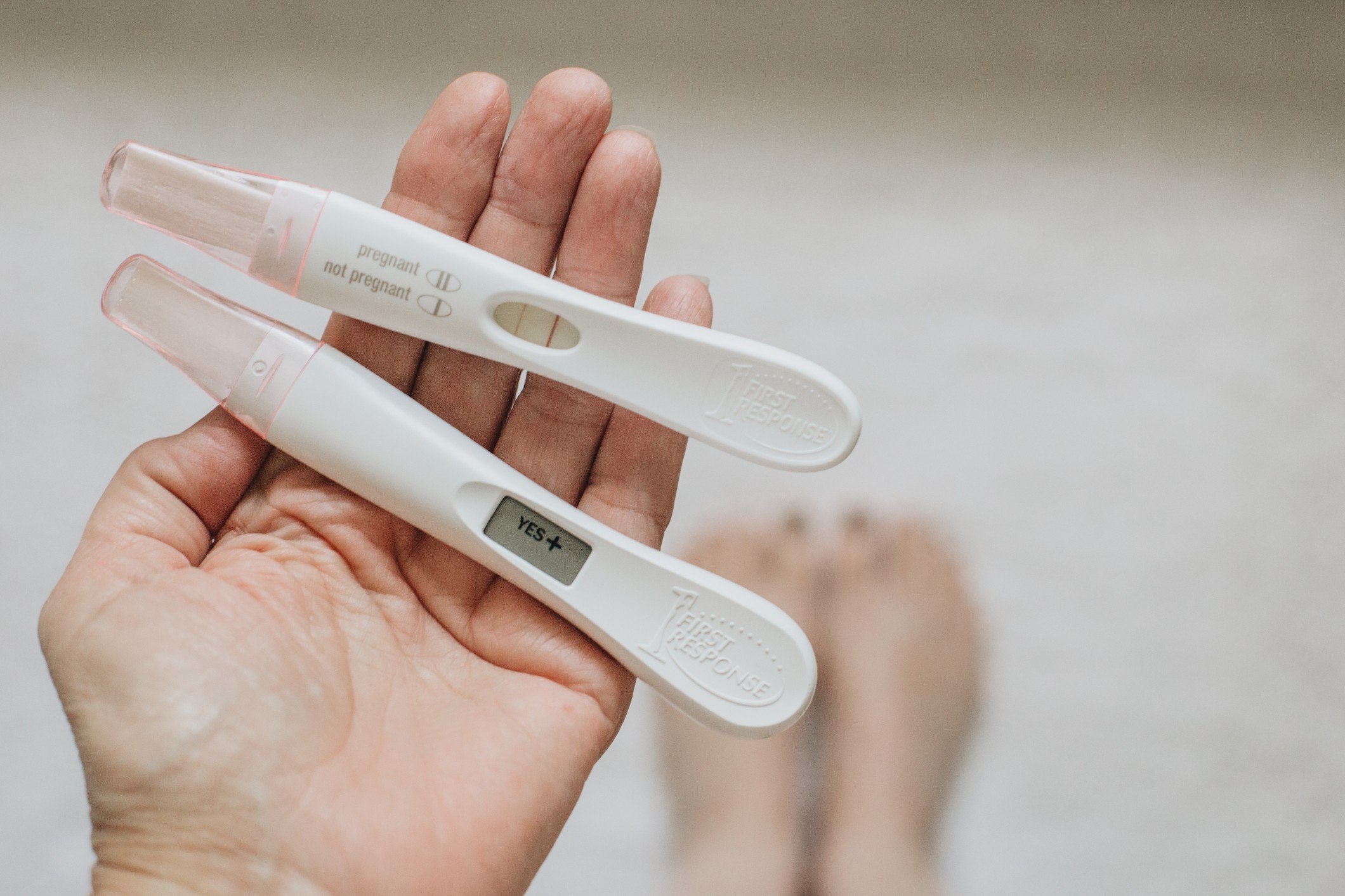Pregnant? Here are some surprising facts about each trimester
Because we know you want to know, here are all the wild, weird and wonderful things happening inside your body right now.

titovailona/Twenty20
Pregnancy: What a wild and fascinating state of being. Women’s bodies are biologically programmed for the task of growing humans, and yet during each trimester, surprising, strange and downright weird things happen that, we swear, no one ever told us about. Here are a few facts about how growing a human can be such an incredible—if a little bizarre—experience.

Did you know that the moment a fertilized egg implants into your uterus and establishes a pregnancy, you are actually already considered 2 weeks into your 40-week pregnancy?
You may consider that good news, because it means that by the time of your missed period, you are likely about 4 to 5 weeks into the countdown, which means you’re that much closer to meeting your baby. But the less-great news? That fact doesn’t necessarily mean you get to skip some or all of those un-fun early pregnancy symptoms (morning sickness, we’re looking at you). Luckily, things start improving in the second trimester.
Surprising facts about the first trimester of pregnancy
- The nose knows: You’re now a super-smeller: You might now find the scent of your favorite lotion nauseating, or decide you need to throw away your dryer sheets because you can no longer stand the smell. Biologically speaking, this change is believed to be a way for pregnant people to avoid ingesting potentially unsafe foods and as a motivator for them to seek out a clean, safe environment.
- Waving hello: By the end of the first trimester (or first 12 weeks) of pregnancy, your baby is still teeny (about 3 inches long), but their fingers and toes have already formed.
- Show and tell: In the first trimester, you may look pregnant at night, then wake up looking like your pre-pregnancy self again. Hormonal changes during pregnancy slow digestion, often leading to gas and bloating. That bloating is responsible for the protruding lower belly that many pregnant people have toward the evening of each day during the first trimester. It can trick us into thinking we may be starting to show. Alas, it’s probably just gas, my friends. Those darn hormones are always messing with us!
Weird facts about the second trimester of pregnancy
- Smooth moves: OK, friends. What is an article talking about interesting pregnancy facts if we don’t talk about poop?! By the end of the second trimester, your baby’s first bowel movement, called meconium, will have formed in its intestines, where it will patiently wait to be passed until the first 24 to 48 hours after birth.
- Go with the flow: I guess if we talked about poop, we should also talk about pee. Although baby’s first urine production happens in the first trimester, it’s early in the second trimester that urine production increases quite a bit. The weird (and maybe a bit gross?) part is that the fluid inside the womb that surrounds the baby, called the amniotic fluid, is almost entirely made of urine by about the 20th week of pregnancy. (Yeah, we didn’t know either.) The baby proceeds to swallow and then pee out that fluid in a continuous cycle until they are born.
- The sound of music: You’ve likely heard that fetuses can hear from inside of the womb. And by the late second trimester of pregnancy, babies can actually respond to sound and voices. Studies involving introducing sound to fetuses in the womb and observing their reaction with ultrasound have actually shown that fetuses can cry in response to those sounds during the second trimester. While they don’t make noise, babies perform the other physical facial behaviors observed during crying.
Digital classes from Motherly
Fun facts about the third trimester of pregnancy
- Milk mama: Your breasts may begin leaking milk! Yes, you read that correctly. A special type of early milk known as colostrum may begin coming out of your breasts before your baby is even born. Your body is forming the pathways needed to start creating milk for your infant once born.
- Baby bubbles: Babies can get the hiccups during the third trimester of pregnancy. Hiccups are related to the movement of the diaphragm, which is also largely responsible for humans’ ability to breathe. During the 3rd trimester, fetuses start to practice breathing by moving their diaphragm, so their ability to have hiccups naturally follows. It’s pretty cute to imagine your little one hanging out in your uterus with the hiccups, right? You may feel their hiccups as rhythmic little bumps against your belly in a predictable, consistent pattern.
- Size up: By the end of your 3rd trimester, your feet may have grown an entire shoe size. What’s even more wild is that your feet may be permanently changed by the end of your first pregnancy. The increase in shoe size is thought to be related to the hormone relaxin, produced by the pregnant body to help facilitate the birth process. Since relaxin does not discriminate, it affects ligaments all over the body, including those in the foot arch. As these ligaments relax, the arch may flatten and the foot may gain length, resulting in a likely permanent change to shoe size.
Bonus round: Wild facts about the fourth trimester
In the first three months after your baby is born, known as the fourth trimester, some pretty wild happenings also take place as your body heals after birth and adjusts to caring for a newborn.
- Growing pains: You will probably experience significant cramping while you are breastfeeding your infant. Breastfeeding is often depicted as a beautiful, peaceful, effortless process that occurs seamlessly after the birth of a baby. While that can be true for some, it’s also true that breastfeeding is work—and can be painful. In the early days, one challenging aspect is the uterine cramping that occurs after birth to help the uterus shrink down to its pre-pregnancy size. This painful cramping is a result of the release of oxytocin when an infant latches to the breast.
- Snuggle up: Skin-to-skin contact isn’t all about your baby. The practice of holding your naked (or diaper-clad) baby against your bare chest is incredibly beneficial for babies. But the mother’s response to holding her baby skin-to-skin is pretty amazing on a sciency-level (yes, that’s a technical term). The oxytocin released by your body in response to that physical, skin-to-skin contact is what allows mothers and babies to recognize each other’s unique scents. Of course, baby gains tons of benefits from this type of contact as well. For example, mother’s breasts have been shown to change in temperature based on the infant’s temperature needs, and skin-to-skin can help regulate an infant’s heart rate, breathing rate, and blood sugar levels.
- Chain reaction: After your baby is born, you could develop an allergy to them! Well, sort of… Let’s clarify. There is a small protein that some people carry on their red blood cells, while others do not. This is called the Rh factor. If a person without Rh factor carries a baby who does have Rh, the pregnant person can develop an immune response against Rh. What does this mean? Although a mismatch in Rh between mother and baby is unlikely to affect a person’s first pregnancy in which the incompatibility exists, your postpartum body will be busy developing an immune response to what it perceived as a foreign invader, so the next time you are pregnant with an Rh-positive baby could cause problems. Luckily, with appropriate prenatal care, these issues are easily foreseen and can be addressed accordingly to keep mother and subsequent baby healthy.
Pregnancy is a wild and wonderful ride. If you have questions or concerns about any of the changes your body is going through, or if something seems not normal, talk to your care provider.
Sources:
Costumbrado J, Mansour T, Ghassemzadeh S. Rh Incompatibility. Updated 2021 Aug 27. In: StatPearls [Internet]. Treasure Island (FL): StatPearls Publishing.
Department of Health and Human Services. Office on Women’s Health. Recovering from birth. 2018.
Dikici O, Muluk NB, Şahin E, Altintoprak N. Effects of pregnancy on olfaction. ENT Updates. 2017 Aug 1;7(2):104-7. doi:10.2399/jmu.2017002009
Reissland N, Francis B, Mason J, Lincoln K. Do facial expressions develop before birth?. PLoS One. 2011 Aug 31;6(8):e24081. doi:10.1371/journal.pone.0024081
Segal NA, Boyer ER, Teran-Yengle P, Glass NA, Hillstrom HJ, Yack HJ. Pregnancy leads to lasting changes in foot structure. Am J Phys Med Rehabil. 2013;92(3):232-240. doi:10.1097/PHM.0b013e31827443a9
Underwood M, Gilbert W & Sherman M. Amniotic Fluid: Not Just Fetal Urine Anymore. J Perinatol 25, 341–348 (2005). doi:10.1038/sj.jp.7211290





